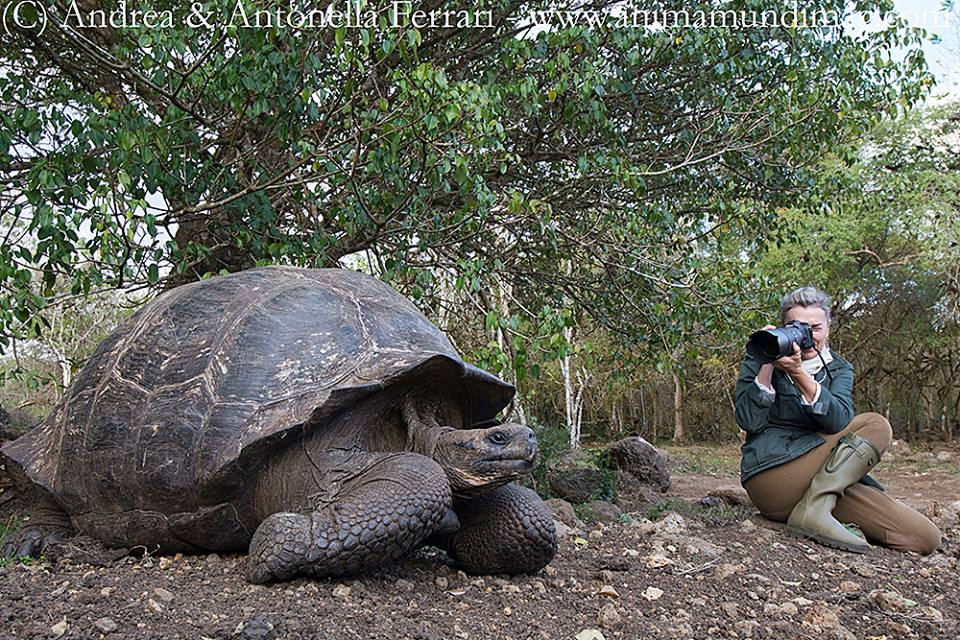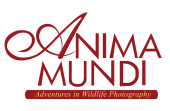 DRAWING THE LINE
DRAWING THE LINE
Some Random Ruminations on the Ethics of Wildlife Photography
I must admit from the start that I am not a huge fan of social networks. I suppose I am too old for such things, and my regular presence on Facebook is basically due only to the desire to promote and share internationally ANIMA MUNDI – Adventures in Wildlife Photography. I hasten to say that thanks to Facebook we have got in touch with several absolutely brilliant wildlife photographers and field researchers from the four corners of the globe, some of whom we now firmly consider good friends; several have even become regular contributors to our magazine. However, what I mostly see during my daily excursions in the social network universe worries and bothers me to no end, especially regarding the subject we’re dealing with here – wildlife photography.
It pains me seeing images of captive, baited, human-habituated or even trained animals being sold as “lucky encounters in the wild”. It worries me seeing grotesque, set-up images (some even taken in zoos!) being awarded prestigious prizes by a deceived (and ignorant) public. It irritates me seeing even the occasional so-called “professional” wildlife photographer getting away with images which have been carefully staged and artificially recreated in a controlled environment – without saying so, of course. Because that is the point, after all – admitting it openly and not being a quack. Am I being naive? I don’t think so – such things have always taken place, but the amount of faked and/or staged imagery is so overwhelming on the Internet by now that the very nature, the very essence of wildlife photography is being raped and degraded – to win competitions, to sell workshops, even simply to reap more useless “likes” on a Facebook page. People go sit in a comfortable hide and come back with a stunning portrait of a baited bear “in the wild”. People go watching human-habituated (to all effects actually trained) Ospreys or Sea Eagles drop from the sky to catch a morsel of fish and come back with wonderful pictures of “wild birds in mid-flight”. People flock to falconry shows or breeding farms and proudly show their pictures of “wild owls flying towards the camera”. Divers swim with belugas being kept captive in a hole in the ice and produce “amazing portraits of wild belugas”. Tame backyard foxes (and their photographers) become stars, African safari encounters are rigged as “lucky sightings” for rich and gullible overseas visitors, even ocean-dwelling sharks are being hand-fed on a regular basis to allow close interaction and underwater photography to droves of paying clients. Not to mention the staged, forced images of frogs giving the high five (thanks to a few drops of glue and some invisible wires) and all other contrived idiocies of the same nature, which sadly abound on the Internet. All this conspires to create a deformed, false, misshapen view of nature and photography, a rose-tinted digital universe where all animals are easily found, easily approached, easily photographed – in stunning poses. Nothing could be farther from the truth – this fakery, this pretense, this make-believe is literally changing our relationship with wildlife and the environment, our perception of the natural world – because nobody admits what goes on behind the scenes. Such nonsensical behavior is deeply insulting (and damaging) to the real wildlife photographers – professionals and amateurs alike – who, driven by the purest passion, endeavour and often succeed to take great images of truly wild animals by sheer will, proficiency and patience alone. To top it all – but this is just a pet hate of mine – I really cannot understand why adult photographers should take pasteurized images of trained, human-habituated and/or semi-captive animals (full, expensive workshops are devoted to this kind of activity, especially with large owls in private estates) and then pretend – even to themselves – that those images were actually taken in the wild. Does such childish self-deceit really affect so many people? And where is the fun in this – where are the perennial expectations of exploration, the long silent walks in the wilderness, the frequent shattering disappointments, the frustration finally crowned by the unique thrill of a real sighting of a free creature in the wild?
So, with the current and apparently unstoppable deluge of low-grade photographic trash and deceitful imagery flooding the social networks, I really feel the urge to set things straight, to draw the line. What follows are some random ruminations about wildlife photography…what it means for us, and how it should be done according to our ethics. Other people are free to do what they want and may have their own motives – it’s a free world – but we publish a widely-circulated magazine which has built its international reputation on quality, and we do not want our readers to be misguided about what we do and how we do it. Ready for the rant? Here we go…
1 – As editors of ANIMA MUNDI – Adventures in Wildlife Photography we never take pictures of captive, confined or human-habituated animals. It has happened on a (very) few occasions in the past when an image was badly needed to illustrate a particularly rare species which we knew being present in the area but had not been able to observe in the wild, but as an absolute rule all our images are of completely wild individuals, portrayed as we encountered them in their natural environment. We also totally refrain from interaction, of any kind. Occasional, careful manipulation may however take place with some dangerous snake species – i.e. the animal found in the wild needs to be gently moved to a more suitable position in the immediate vicinity to be photographed before being released unharmed. This is a common practice adopted by most reptile photographers and field researchers since – generally – reptiles and amphibians cannot be properly portrayed as found in situ since they are usually found hiding or in unaccessible places.
2 – As editors of ANIMA MUNDI – Adventures in Wildlife Photography we are strongly committed against the practice of baiting and feeding of wild animals for the purpose of photographing them (as it is often done with several iconic species, from sharks to eagles, owls, vultures and bears). We despise the practice and none of our images is taken using it. We go and search long and hard for our subjects, we slog it out in savannahs and rainforests, and we are not necessarily always successful…but that is how wild animals in their natural environment are, and where the actual fun lies – at least according to our vision.
3 – As editors of ANIMA MUNDI - Adventures in Wildlife Photography we never use hides to photograph animals, particularly where baiting to guarantee sightings to paying customers is practiced. The only exception to this rule is with hides erected for scientific research in the vicinity of salt licks, where they are needed to avoid disturbance to the animals’ natural behavior – as in the case with macaws in Peru.
4 – As editors of ANIMA MUNDI – Adventures in Wildlife Photography we deeply dislike and try to avoid any human-animal interaction images, especially where feeding, petting and touching are involved. Rare exceptions to the rule are accepted when a size comparison is useful or a significant conservation message is attached to the image.
5 – As editors of ANIMA MUNDI – Adventures in Wildlife Photography we never apply any Photoshop special effects or excessive editing to our images. We just convert our Nikon raws to jpegs and apply a very limited amount of sharpening (intensity 50-90, radius 1, threshold 0) to enhance viewing on digital media. There is no cloning (bar the occasional speck of sensor dust) and no artificial enhancing of our photography, and moreover as a strictly followed rule we never crop our images, which are usually composed in-camera during shooting. What you see on the magazine pages is exactly what we have observed in the field.
6 – Contributors to ANIMA MUNDI - Adventures in Wildlife Photography may occasionally resort to one or more of the practices above, but we want to stress that this is their choice alone. We can decide to publish such images when overall quality of the contribution grants it, but we do our best to make the practice utilized known to our readers in the accompanying text.
All the above might sound granted, obvious and possibly even somewhat arrogant to some, but I feel it is about time to put it in writing for all to read, as the grotesque fakery which is overwhelming the digital media is dangerously blurring the line between reality and illusion. We are proud of our work – with all its obvious limits and many faults – and we are proud of the physical efforts, expenditure and enormous patience it takes, and we want to let our readers know where we stand.
